QuestionQUESTION: I recently uncovered turtle eggs. Breed is unknown. But I put them in a container and sprayed water on them to make them and the soil wet. My parents saw them move and saw the actual turtle inside the egg. My father put them back down by a dried up puddle and they shriveled up and I'm not sure if they are still alive. I haven't sprayed them with water in a few days but I think I might put them back in the container and cover them with moist paper towels. How can I tell if I have good eggs, or how could I save them? I am truly sorry if this question doesn't meet your requirements.
ANSWER: Hi Gina,
Unfortunately, the turtle embryos have almost certainly all died, for a couple of reasons. Turtles lay their eggs in the ground, in a carefully chosen spot, so that they have the right temperature and humidity throughout the incubation process. If they're dug up, those conditions need to be replicated in some way (usually by using an incubator). If they were put out in an exposed area to the point where they shriveled up, they dried out and the embryos would have died. The factor is that the eggs can't be rotated. Almost as soon as eggs are laid, the embryonic cells begin to develop at the top of the egg (where there's a small bubble of air). Once this happens (within 24 hours after laying), if the eggs are turned, the developing embryo will drown. It sounds likely that at some point the eggs were turned, and that would also kill the embryos. So at this point it's very unlikely any eggs are still viable. Sorry!
In the future if you uncover a nest again, if at all possible cover it up again carefully and leave them alone. If there is a problem and it's not safe to leave them, fill a plastic container with a couple inches of vermiculite mixed 50/50 with water by weight. Carefully remove the eggs from the nest and mark the tops with a pencil, being very careful not to rotate them. Nest them in the vermiculite (about halfway; don't bury them), cover the container loosely (there must be air circulation), and put in a spot that's roughly 80-88 degrees consistently, but no hotter. Mist lightly with water a few times a week. Most native species will hatch in roughly 2-3 months, depending on temperatures. Don't assist hatchlings; it can take a day or two to hatch, but hatchlings that are too weak to exit the egg probably won't survive anyway. Once they hatch, they should be released by the nearest body of water. If box turtle hatchlings, it would be best to consult a wildlife rehabber on what to do. But again, this is ONLY if the nest is highly endangered. Otherwise, nests should be left alone.
One other note--turtles don't have breeds. Wild animals have species, such as eastern box turtle, California king snake, polar bear, etc. Each species has its own unique scientific name. There are specific taxonomical differences between species (physiological characteristics, more or less). Breeds are man-made, such as different breeds of cows (Holstein and Jersey), or different breeds of dogs. A mastiff and a corgi are two different breeds, but the same species, and will have the same taxonimical markers even though they look very different. Humans can create breeds, but not species. Short version: species are natural, breeds are artificial. Hope that makes sense!
---------- FOLLOW-UP ----------
QUESTION: Wow. Thank you so much. I was fighting with my father because he kept on moving them. They were layed about 1 month ago roughly. Not sure exact but we found them around 3 weeks ago. I'm not sure if this makes a difference but I just kept thinking about it and when. I believe it was then after a huge rainstorm. That happened at the end of July. I would like to breed turtles, and also keep them as pets. There is a lake by my house and was wondering would smaller turtles (most likely to be a paint) be better or in between small and medium? I love turtle and are obsessed and I was really disappointed to find them being moved by my dad. I knew once he moved them this last time it would be over. I was really exited to watch them grow and hatch. And thank you for pointing out the breed/species. I wasn't so sure.
AnswerIf the embryos were visible moving inside the eggs, a month sounds about right. Later on, the embryos become big enough to fill most of the egg and you can't really see anything. Too bad what happened, but you can't do anything about it now.
Turtles require a lot of room, so really smaller is better. Figure 10 gallons of water per inch of turtle, so a 6" turtle needs at least a 60 gallon tank, plus filter, lights, etc. They aren't too expensive to keep once you get them set up properly, but initial expenses can be several hundred dollars. Painted turtles make good pets. If you do want to get a turtle, though, I really recommend you buy a captive bred hatchling, or get one from a local rescue. Wild turtle populations are really stressed, for one thing, but wild turtles are much shyer and don't adapt as well to captivity. Plus New Jersey has pretty strict laws, and many turtle species are protected. When you're ready to get a turtle, let me know and I'll find some reputable sources for you. There are a lot of shady places online, so you do have to be careful if you want a healthy turtle.
Here's some information for you to read so you have some idea of turtle care. If you have any questions, post back and set it to *private* and I'll give you my email so you can contact me any time with questions.
P.S. I've loved turtles and tortoises ever since I was little, too.
http://www.austinsturtlepage.com/Care/caresheet-eastern_painted.htm
http://www.chelonia.org/articles/chrysemyscare.htm
http://www.austinsturtlepage.com/Care/care.htm
http://www.austinsturtlepage.com/Care/waterquality.htm
http://www.austinsturtlepage.com/Care/housing.htm
BTW, if you notice, there are several different kinds of painted turtles. These are all subspecies--the main species is Chrysemys picta, and the third name (like Chrysemys picta marginata) indicates the subspecies.

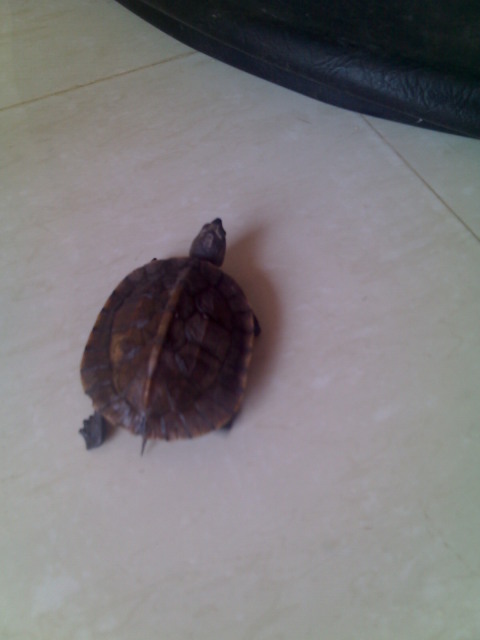 How do I care for an Indian Black Turtle (Melanochelys trijuga)
Question
Pic of the turtle
Hi,
I am am animal lover li
How do I care for an Indian Black Turtle (Melanochelys trijuga)
Question
Pic of the turtle
Hi,
I am am animal lover li
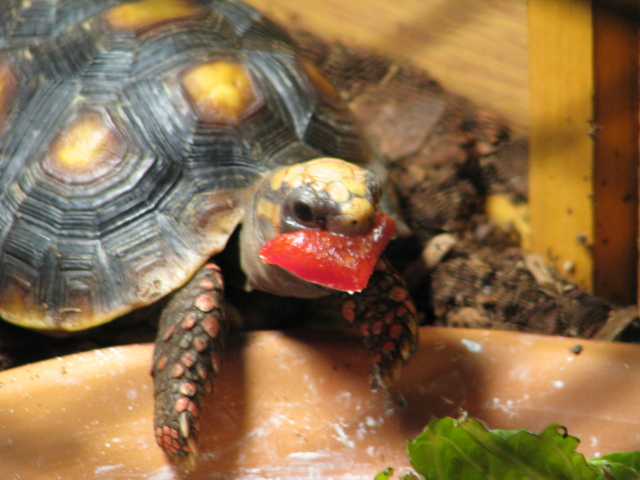 CONSTIPATION
QuestionQUESTION: HI. I HAVE A 6 MONTH OLD RED FOOT TOR
CONSTIPATION
QuestionQUESTION: HI. I HAVE A 6 MONTH OLD RED FOOT TOR
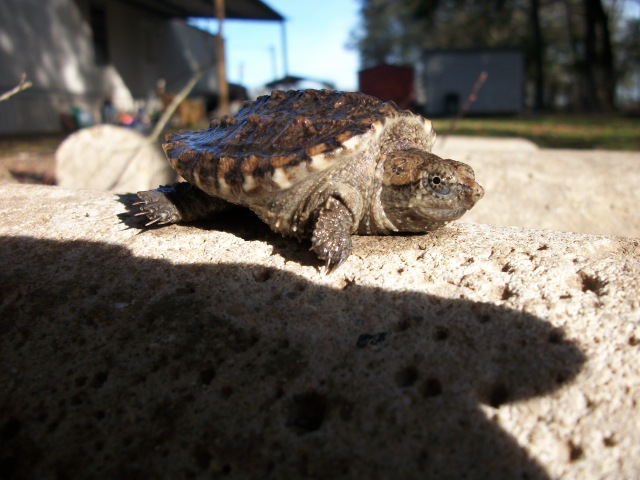 Species identification?
QuestionSnapping Turtle
QUESTION: Can you tell m
Species identification?
QuestionSnapping Turtle
QUESTION: Can you tell m
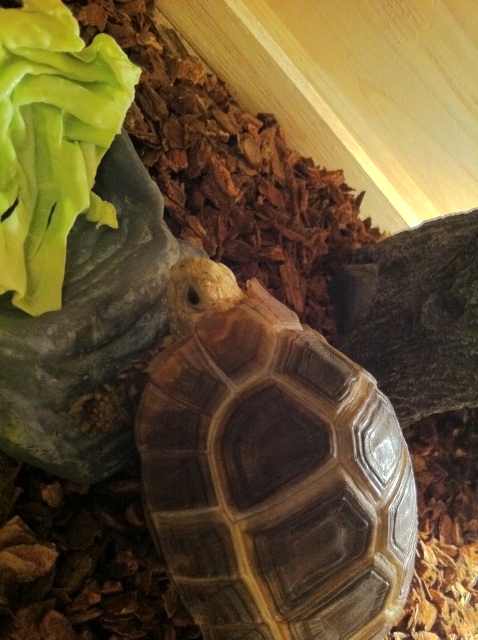 unidentified tortoise
Question
my tortoise (eating)
dear Jamie
i got a torto
unidentified tortoise
Question
my tortoise (eating)
dear Jamie
i got a torto
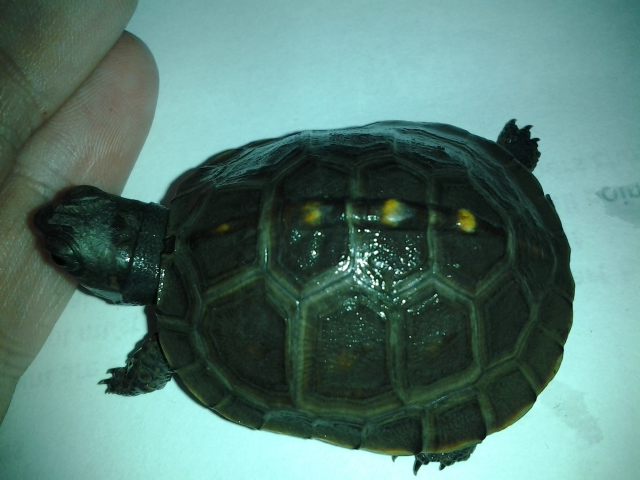 What type of turtle is this
Question
What kind of turtle is
My daughter foun
What type of turtle is this
Question
What kind of turtle is
My daughter foun